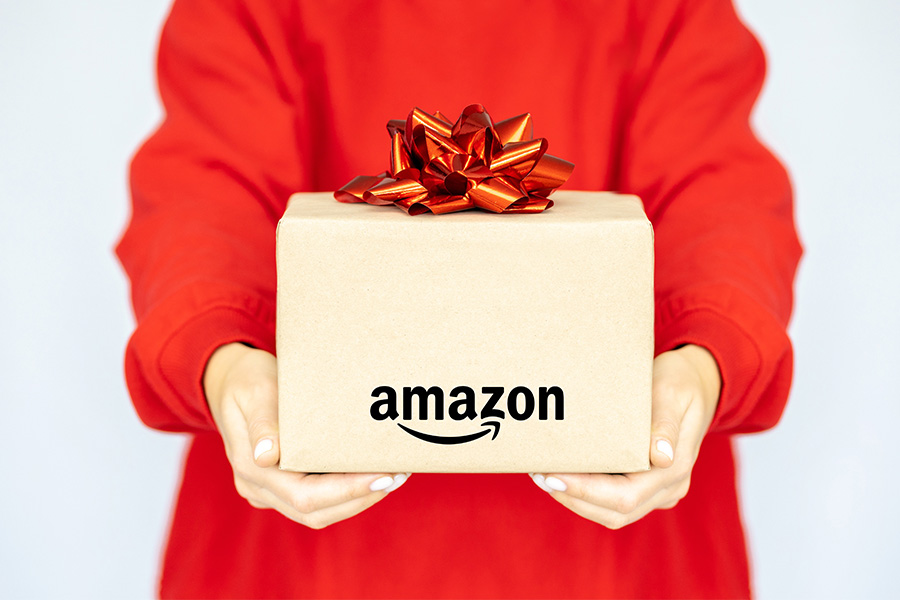Resources - Blog
What Can Prime Day 2022 Tell Us About Q4 Shopping?

With insight into consumer behaviors and the impact of discounts and advertising, you can use recent Prime Day results to inform your holiday campaign strategy on Amazon. Learn how.
Prime Day 2022 showed that retail holidays continue to generate excitement and urgency, even when wallets are tight.
Navigating the changing e-commerce demand and shifting consumer needs and behaviors is exhausting. It can seem like there is no way to keep up or get ahead. Thankfully, the recent Prime Day can tell us a lot about consumers’ behaviors and what brands, sellers, and retailers can do to be successful this holiday season during crucial periods like Cyber 5 Week and the un-confirmed October Prime Day event.
Continue reading to find out what key lessons we learned from Amazon Prime Day 2022 and how we can turn those lessons into Q4 holiday strategies.
5 Key Takeaways from this Year’s Prime Day You Can Use for the Holidays
Worries of inflation and a looming recession caused many to believe that this year’s Prime Day would flop. Luckily, that was far from the case: this year was the biggest Prime Day Event yet, with $11.9 billion in sales and an overall 8.5% growth of U.S. online spending across retailers compared to 2021.
If anything, Prime Day 2022 showed that retail holidays continue to generate excitement and urgency, even when wallets are tight. To ensure success for Q4, follow the below tips:
1. Get Your Deals Ready Early
During Prime Day’s 48-hour event, consumers wanted to take advantage of deals before they were gone, meaning that as soon as deals were posted, they were ready to buy.
We recommend using this knowledge to get your deals ready (and promoted) early. Inflation and shipping concerns may cause many shoppers to start their holiday shopping early, and some shoppers have already begun during Prime Day.
Expect consumers to purchase more everyday items this holiday season ahead of their personal and gift spending
2. Focus on Promoting ‘Essential’ Products
Consumers will be seeking out more “necessity” or everyday items this holiday season ahead of their personal and gift spending. Products in this category include household essentials (32%), health and beauty (28%), grocery, pet care, and baby items.
This Prime Day trend should influence your product assortment, placing a greater emphasis on re-stocking your everyday essentials and more practical holiday gift options.
And don’t forget about gift cards! During times of economic uncertainty, friends and family are more likely to give gift cards as presents, so be sure that your stores are prepared for a potential influx of purchases with gift cards near the end of December and throughout January, along with the usual post-holiday returns.
3. Discounts, Coupons, Sales, and More Sales
We would be remiss to say that inflation won’t be impacting buying. The annual inflation rate is now 9.1% and even more in some categories like food (10.1%).
Our price-conscious consumers are going to want those discounts and sales of yesteryear. With inflation rising and talks of a recession, consumers are looking for where they can save their money even though sellers and brands also feel the impact of inflation.
We suggest running reports to determine which products you can run substantial promotions on to gain consumers’ attention.
Cyber 5, also known as Turkey Five and Black Friday Cyber Monday (BFCM), is traditionally the peak of the holiday shopping season, but with an additional Amazon Prime Day sales event in October, we may be starting sooner than usual.
Expect sales from the October event to bleed into holiday shopping and factor into your success metrics at the end of the year.
Total ad sales increased 1073% compared to last year.
4. Advertising Spend is Increasing, But so are Sales
Discounts aren’t the only thing impacting consumers’ buying decisions. Advertising can help you be seen leading up to and on turn-key events and seasons. During Prime Day, total ad spend increased by 31% compared to 2021, and CPC rose by 123% across all categories, but as ad spend rose, so did ad sales. Total ad sales increased 1073% compared to last year.
Successful brands and sellers are optimizing their advertising campaigns year-round to better compete for the busiest seasons.
When deciding where to put your advertising budget, prioritize your top-selling products, shift towards advertising the more “essential products,” and focus your efforts on various advertising types (including the most successful Sponsored Product Ads).
Further Reading: Best Ad Types Breakdown from Prime Day 2022
5. Don’t Sell in a Silo
Inflation, rising shipping costs, higher fuel prices, stock-outs, excess inventory, and increasing advertising competition all impact how you sell on Amazon. That’s why it is best to think about your holiday strategy holistically.
Your pricing, inventory, and advertising strategies should all work together to meet your holiday sales goals.
During the lead-in to the holidays, you need to establish the following:
- Priority products
- Deals
- Sales targets
- KPIs
- Budgets
Doing so will help you create a holiday strategy that spans across pricing, inventory, and advertising. Remember that you should build out your Cyber 5 campaigns at least 2-4 weeks before launch to avoid any problems with Amazon running your campaign.
Further Reading: For a deeper checklist on how you can begin to prepare for the holidays, grab a copy of our Amazon Holiday Readiness Checklist.
Final Thoughts
Amazon Prime Day is a helpful event to boost sales in the summer and get insight into upcoming holiday purchases and consumer priorities.
Review your own Prime Day performance to better understand how you can continue to improve your selling strategy on Amazon.
Need some help preparing for the holidays? Learn how you can maximize your Q4 holiday performance with the leading advertising and pricing technology for brands and retailers on Amazon. Sign up for a 14-day free trial with Feedvisor today!
